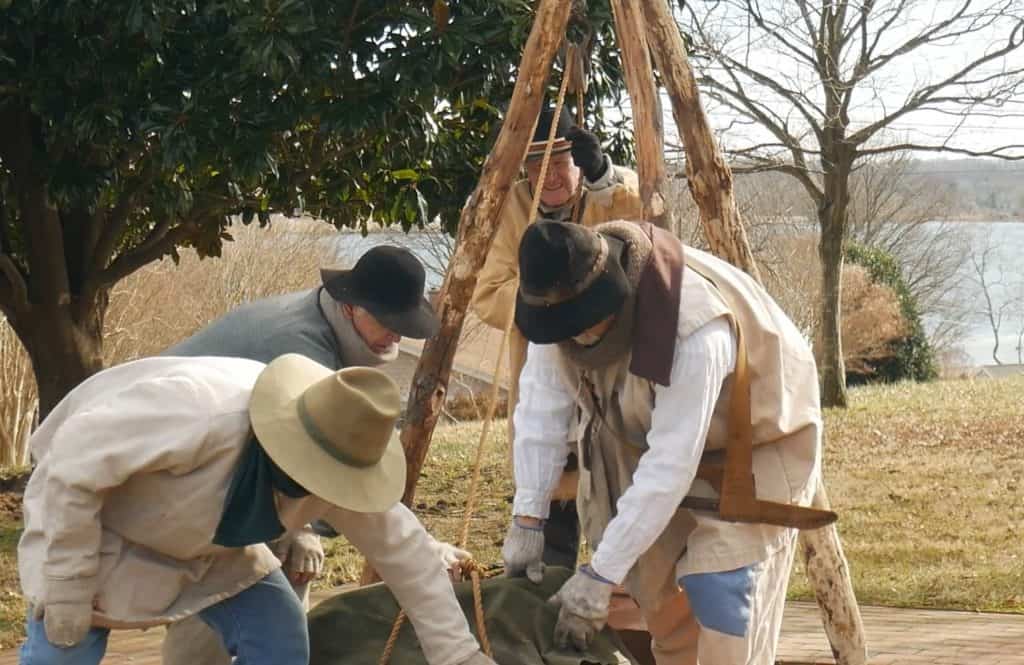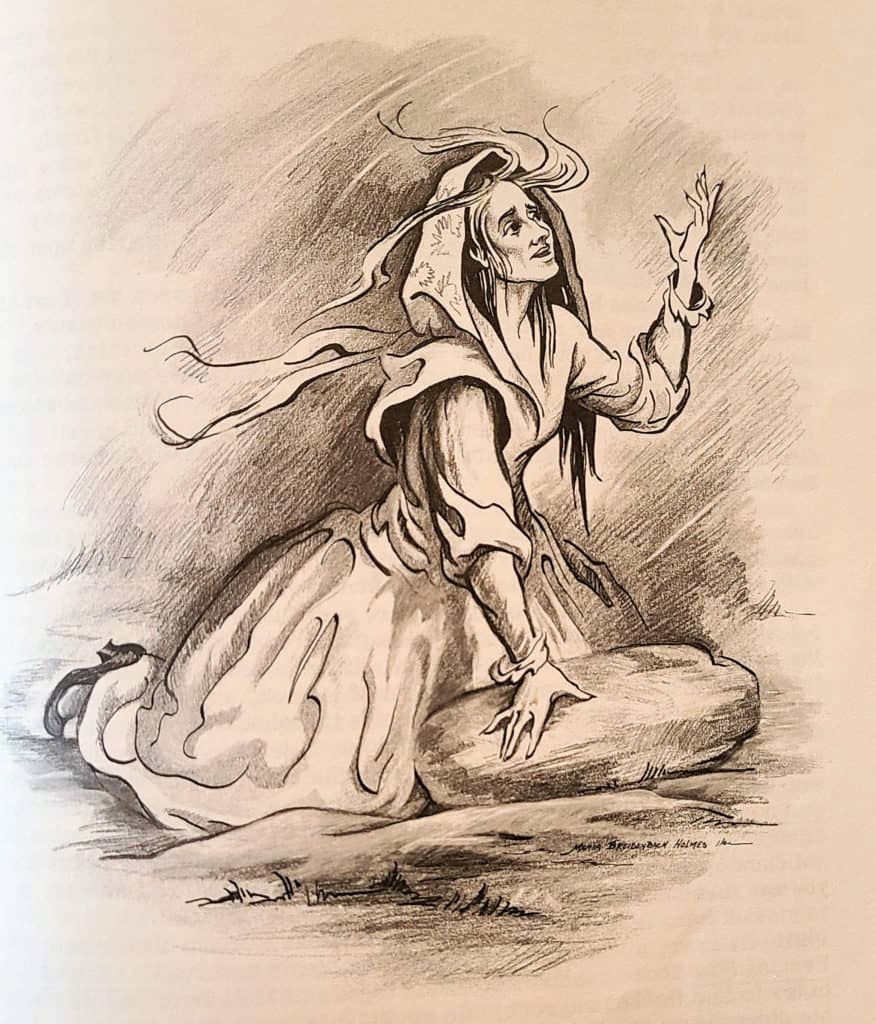Moll Dyer Rock Relocated
By Jillian Amodio
A woman, a healer, a loner, a witch? Moll Dyer, an early settler of St. Mary’s County, in what is now Leonardtown, was different and misunderstood. For those simple reasons, she paid the ultimate price, her life.
As she fled her humble cottage one cold winter’s night, she sought escape from the torches and clubs that were being wielded by her neighbors. Seeking refuge in the frozen woods, the same place where she spent countless hours collecting plants she used to heal those who had now turned against her, she eventually succumbed to the elements. It was here in this forlorn corner of the woods that she secured her place in history, as solid and permanent as the rock to which she clung.
This weekend, a local historical society hopes to rewrite her history and protect the physical reminder of her story when the Moll Dyer Rock is relocated.
While little exists by way of historical records, Dyer likely began her life in Devon, England. In the mid-1600s she and her two brothers travelled first to the West Indies as indentured servants prior to settling in Maryland. While in the West Indies she learned about the herbal medicine and practices that she would later bring with her to Maryland.
Once in Maryland, Dyer settled on a plot of land in a humble cottage where she kept to herself. Some legends speak of a large white dog that was her only companion. Knowing little about her, the colonists regarded her with immediate suspicion.
Dyer earned a reputation as a healer, offering locals herbal remedies to various maladies. While she may have helped ease some people’s pain and symptoms, suspicions grew and she was suspected of witchcraft.
The winter of 1697 was brutal, pairing intense cold with a particularly deadly strain of influenza. Widespread starvation and illness pushed the colonists towards hysteria and desperation. While some sought solutions, others sought someone to blame.
Colonists from surrounding plots of land approached Dyer’s cottage in the dead of night, carrying clubs and flaming torches, intent on ridding their town of the suspected witch. As her cottage was set ablaze, Dyer escaped and fled into the freezing winter wilderness.
Several days later a young man looking for his cattle came upon Dyer’s frozen body. She was draped over a large rock. When her body was removed it is said the imprint of her hand and knees could still be seen. The townspeople declared the rock cursed, an eternal punishment cast on the town.
For decades locals have perpetuated the myth saying that touching the rock can bring illness or misfortune. In 1968, a local reporter by the name of Philip Love asked landowners if they could lead him to the rock. The rock was located and in 1972, with the help of local National Guard members, the nearly 900-pound boulder was moved to the old jailhouse, now the site of the Old Jail Museum in Leonardtown. There the rock has suffered erosion from the elements and at times mistreatment by tourists.
At the urging of resident Lynn J. Buonviri, author of Moll Dyer and Other Witch Tales of Southern Maryland, and with the support of Peter LaPorte, executive director of St Mary’s County Historical Society, the famed Moll Dyer Rock is being moved once more, outside of Tudor Hall Manor, the historical society’s headquarters where it can be more safely preserved.
The historical society hopes to honor Dyer’s existence rather than to merely continue the folklore.
A virtual dedication will be held Feb. 26 at 1pm (www.VisitLeonardtownMD.com). The ceremony will begin with a reading of a poem about Dyer written by Janis Russello, followed by several speakers, and culminating with an official proclamation declaring Feb. 26 Moll Dyer Day.


